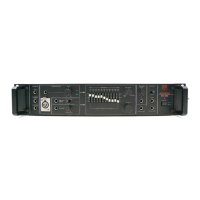OUTPUT CONNECTIONS
-USING VOCAL AMP ONLY -USING VOCAL AMP
12~~)
ONLY
*USING VOCAL AMP AND GUlTAR
AMP
7
--
b"#T*"IIMY
YL>CII
AMP
i
*USING VOCAL AMP
(2~~1
AND
GUITAR AMP
*USING GUITAR AMP ONLY
7
In the two drawings at the left. the
vocoder
and/or direct microphone
sounds do not appear at the
GlJlTAR
OUTPUT
lack@
L
NOTE
:
L
With no connection to
the
VGCGDER/DIRECT
jack. the vocoder
will
remain in the
VOCODER MODE
About
the
Vocoder
In
1939.
H.Dudiay announceda band
width compression device for use
in
telecommunication systems The
present day vocoder is based on the
priciples of this device.
The vocoder requires two inputs: the
carrier input and the program input.
The program input often
conslsts of
spoken or sung words which are input
through a microphone. The carrier
usually consists of an instrument input
such asa synthesizer.
The vocoder circuits consist of two
major sections: the analyzing
secti0.n
and the synthesizing section. The
analyzing
sectton breaks down the pro
-
gram lor voice) input to determ~ne its
frequency content at any given instant,
then re
-
assembles this sound in the
synthesizer section using the carrier lor
instrument1 in~ut as a basic source of
building material
In this way the carrier
or instrument input is continuously
processed
so that it seems to speak or
sing the words which appear at the pro
gram input The pitch of
thls sound will
be determined by the
p~tch of the car
-
rier input
The
programor voiceinput is analyzed
by passing
ir
through
a
set of filters to
determine what the
harmon~c content
of the sound is and how it changes as
the sound progresses For example, the
g
sound
"
oo
"
usuallv consists of primarilv
low frequencies while the sound
"
ee
"
usually consists of higher frequencies.
The result of
this analysis is a group of
control voltages which are used to con
-
trol the synthesizer portion of the
vocoder Each of these control voltages
controls the output level of a second
series of filters.
Thls second series of
filters operate on the carrier input sig
-
nal. With the sound
"
ee
"
, then, the
control voltages which represent higher
frequencies will be at a higher level than
ttlose controi voltages representing
lower
frequences thus opening partially
or completely those synthesizer section
filters associated with the higher fre
-
quencies. By this means, the original
voice sound is reconstructed using the
tone color material from the carrier in
-
put. The sound of the instrument used
as the carrier input will seem lo
"
speak
"
or
"
pronounce
"
the
"
ee
"
sound.
Using
the
Vocoder
Since the vocoder produces sound by
analyzing the microphone input and
using this analysis
to reconstruct the
sound from the carrier input,
it be
-
comes obvious that the vocoder cannot
produce sound if either of the two in
-
puts is missing. This means that it be
-
comes very important for the words
spoken or sung into the microphone to
be well
synchronied with the notes or
phrases played on the input
tnstru-
ment.
Since the pitch of the vocoder output
is determined by the instrument input
rather than the voice input, it
is
possible
to use pitch related effects such as
vibrate and pitch bend to enhance the
sound.
If the vocoder output sound is com
-
bined with the direct sound [BALANCE
Control
(D
near center), it is possible to
produce duet effects by singing pitches
which are different from those being
played on the input instrument.

